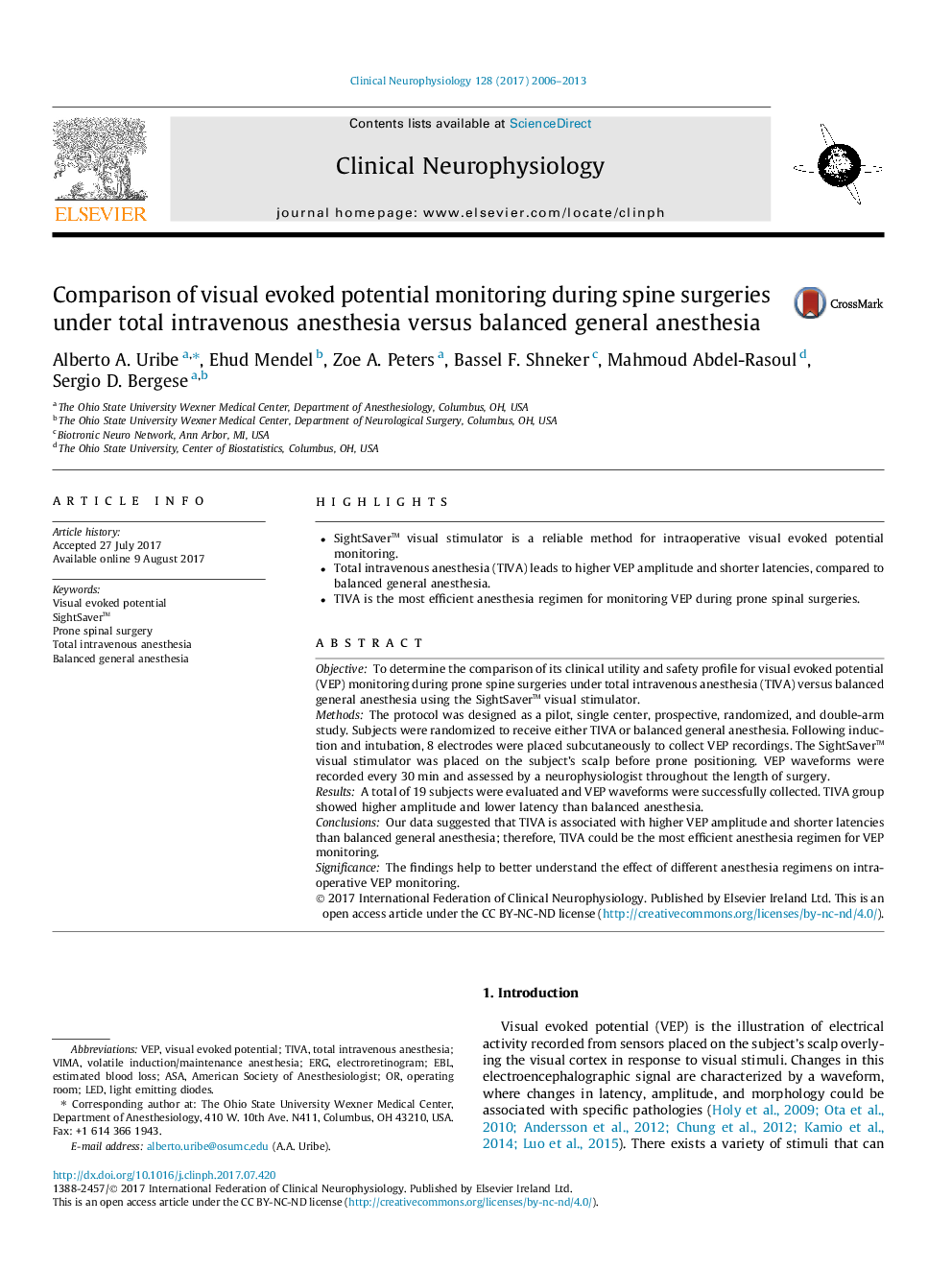| Article ID | Journal | Published Year | Pages | File Type |
|---|---|---|---|---|
| 5627717 | Clinical Neurophysiology | 2013 | 8 Pages |
â¢SightSaver⢠visual stimulator is a reliable method for intraoperative visual evoked potential monitoring.â¢Total intravenous anesthesia (TIVA) leads to higher VEP amplitude and shorter latencies, compared to balanced general anesthesia.â¢TIVA is the most efficient anesthesia regimen for monitoring VEP during prone spinal surgeries.
ObjectiveTo determine the comparison of its clinical utility and safety profile for visual evoked potential (VEP) monitoring during prone spine surgeries under total intravenous anesthesia (TIVA) versus balanced general anesthesia using the SightSaver⢠visual stimulator.MethodsThe protocol was designed as a pilot, single center, prospective, randomized, and double-arm study. Subjects were randomized to receive either TIVA or balanced general anesthesia. Following induction and intubation, 8 electrodes were placed subcutaneously to collect VEP recordings. The SightSaver⢠visual stimulator was placed on the subject's scalp before prone positioning. VEP waveforms were recorded every 30 min and assessed by a neurophysiologist throughout the length of surgery.ResultsA total of 19 subjects were evaluated and VEP waveforms were successfully collected. TIVA group showed higher amplitude and lower latency than balanced anesthesia.ConclusionsOur data suggested that TIVA is associated with higher VEP amplitude and shorter latencies than balanced general anesthesia; therefore, TIVA could be the most efficient anesthesia regimen for VEP monitoring.SignificanceThe findings help to better understand the effect of different anesthesia regimens on intra-operative VEP monitoring.
